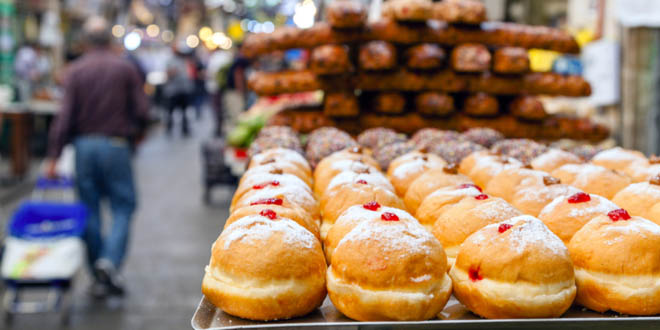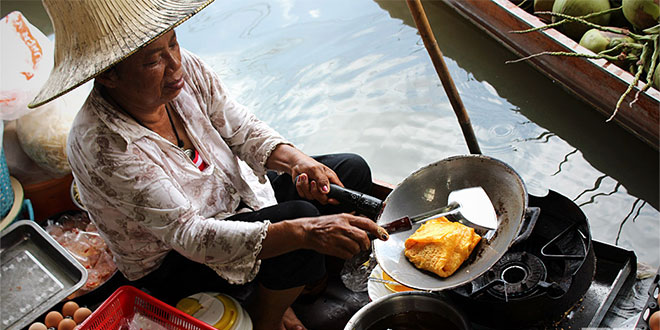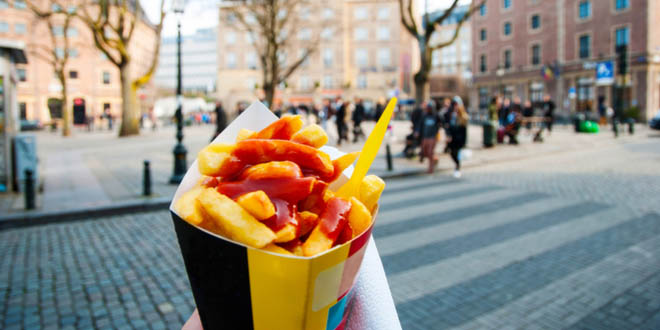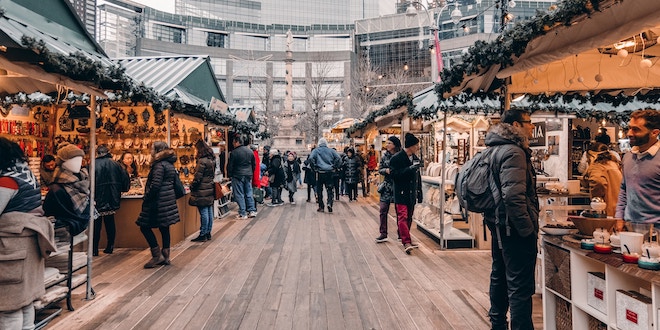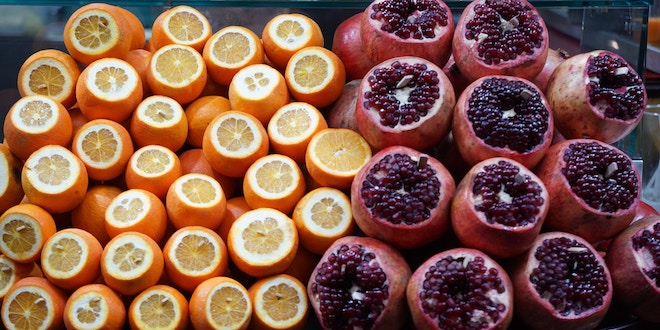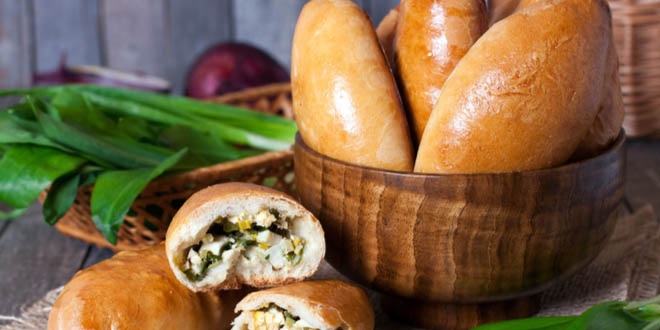6 Israeli Treats to Buy in a Local Market
Last Updated on March 24, 2023
Markets are on any foodie’s travel list. They offer enticing sights and smells attracting tourists and locals alike. Since they are often the most crowded and loudest place in the city, it can help to go in with a goal. Even if this aim is vague (like finding the pastry shop), a target can help serve as a motivation to enter, or landmark in, the bustle of the crowd. If you are visiting Israel, here are some tips and examples of what to look out for in the market. This list, however, in no way conclusive. So, keep your eyes peeled, there are delicious Israeli treats everywhere!
American Peanuts
In Israel, fried peanuts are a common snack. Locals call this treat “American Peanuts.” The most popular brand is Sabbaba (סבבה). This word cools from Arabic and is now slang in Modern Hebrew. It means “cool.” American peanuts from the market are generally puffier than the brand-name peanuts. Both, however, are a fun and easy snack when walking through the stalls or sitting on the beach.
Za’atar
Ver esta publicación en Instagram
Za’atar is a common spice in Israel. Your first encounter may very well be at breakfast. Hotels and restaurants sprinkle the spice on labneh and serve it with pita every morning. Za’atar is not just common on cheese though; it is also delicious on other dishes. In the market, you will often see it on ash tanur. Ash tanur is a traditional, oven-baked sourdough bread. Read more about it (and four other types of bread) at Five Israeli Breads You Have to Eat. Whether you eat it at breakfast or anywhere else in Israel, if you fall in love with it, be sure to buy some from the market. Just be careful of how much you buy as you are only allowed to carry a limited amount out of the country. Security officers at Ben Gurion do confiscate your spice pouch if it is over the limit.
Date Palms
Ever notice how dates are almost exclusively dried? There are very few places to buy fresh date palms outside of the Middle East. Israel is an exception. Fresh dates are still less common than their dried kin, but if you come during the right season, fruit stands offer this rarity. The local production of date palms may help explain why dried dates are so much better in Israel. To really notice this quality difference, buy your dates in the market. While many souvenir shops offer boxed dates from the Holy Land, do not buy these. They are of inferior quality and overpriced.
Sage Tea
Tea in Israel is a bit different. This is visible even in where this drink is sold. There is no divide between spice stores and tea stores in markets. In fact, many market stands sell whole spices (like star anise, or strips of cinnamon bark) as tea. Instead of bagged or loose leaf chamomile blends, they sell unblended, flower blooms as chamomile tea. Sage is one of the most common teas in Israel despite how rare it is in this form elsewhere. Funnily, even though whole sage leaves are popular, if you ask about it like it is a spice, instead of a beverage, you may receive some confused looks. Try sage the Israeli way; drink it.
Local Pastries
Every season and every culture in Israel comes with its own sweet delicacy. Much like fruit and vegetables in markets, it is best to buy local and in season. If you are in a Druze village, try the stand there. If you’re in a Jewish neighborhood around Purim, taste as many hamentashen as you can. Instead of approaching the market dead-set on one dessert, be ready to explore and learn about the specific background of whichever market you wandered into.
Turkish Delight
Turkish delight might not sound like an Israeli treat, but it is very popular there too. These gummy treats are most common in the Arab sweet stands, which carry a wide array of flavors. Try the ones that are more naturally colored; they are the best flavors. Rosewater and pistachio are among some of the most beloved and delectable varieties. Taste some with nuts or coconut to vary up the texture.
Market Speak
Since there are so many cultures in Israel, each with their own section of the market, it may seem overwhelming. But don’t worry, you do not need to be a polyglot to get around most markets.
TAKEAWAY: Not only do most vendors speak English, but there are so many cognates between Arabic and Hebrew, that you can get pretty far using just one word. For example, in Hebrew, to ask how much something costs, you say “cahmah?”; while in Arabic is “cahm?”. “Zay-ye-toon” is olive in both. “Mishmish” is apricot, “toot” strawberry, and “tin” fig.
If you have a favorite fruit, look it up. There is a good chance the name is the same in both languages. Even if it’s not quite the same, don’t worry. If you have a strong accent, a vendor will likely be able to decipher what you mean.
Markets are one of the best ways to experience local food culture. They display what local farmers grow and what the residents really eat. Not only are they a good lesson, but they are also much less expensive than most souvenir shops or grocery stores. If your list of tokens to take home contains any Israeli treats, markets are a must. They offer unparalleled quality and variety in addition to cultural immersion.

